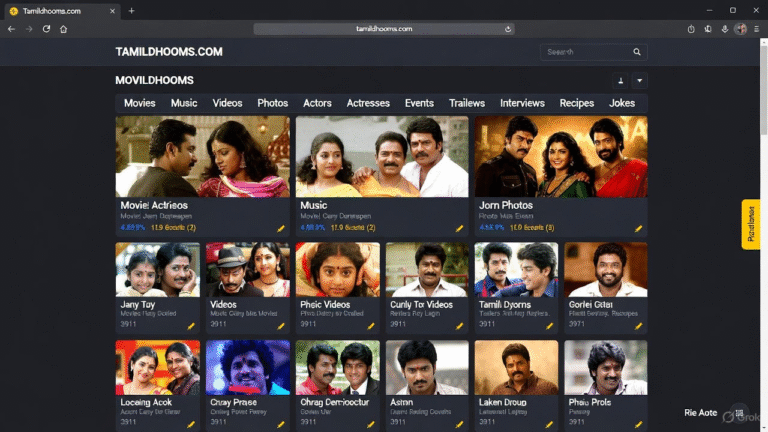
Atlanta Hawks vs Orlando Magic
Introduction
The 2025 NBA season has delivered some thrilling clashes, but few matchups have been as entertaining as Atlanta Hawks vs Orlando Magic. Every meeting between these two Eastern Conference teams feels like a battle of styles — Atlanta’s fast-paced, guard-driven offense versus Orlando’s physical frontcourt and balanced defense.
This season, their encounters have given fans exactly what they hoped for — clutch plays, breakout performances, and stat lines that reveal more than just scores. Let’s break down every key moment, player impact, and statistical highlight that shaped these two memorable 2025 games.

Game One Recap — October 24, 2025 (Atlanta Hawks 111 – 107 Orlando Magic)
The first matchup of the season was a statement game. The Magic dominated the first half, leading by 14 points at one stage, but the Hawks clawed back with poise, fueled by Trae Young’s fourth-quarter takeover.
Young finished with 25 points and 6 assists, scoring 6 points in the final 46 seconds — a classic clutch display that silenced the Amway Center crowd. His shot selection and rhythm in those closing moments showcased why he remains one of the league’s premier closers.
On the other hand, Franz Wagner led Orlando’s offense with 27 points on 10-for-17 shooting, adding 6 rebounds. He started aggressively, scoring 21 points in the first half, but slowed in the later stages as Atlanta’s defense adjusted. Paolo Banchero contributed 18 points and 9 rebounds, but struggled against Onyeka Okongwu’s interior defense.
For the Hawks, De’Andre Hunter added 17 points with efficient mid-range shooting, while Jalen Johnson chipped in 12 points and 7 rebounds. Their bench, led by Bogdan Bogdanović’s 14 points, played a vital role in the comeback.
Atlanta’s ability to shift gears — moving from isolation sets to transition offense — proved decisive. They scored 29 fast-break points compared to Orlando’s 15, highlighting a key contrast in tempo.
Statistical Breakdown — Game One
| Category | Hawks | Magic |
| Field Goal % | 47.8 % | 44.3 % |
| 3-Point % | 38.9 % (14/36) | 33.3 % (11/33) |
| Rebounds | 44 | 46 |
| Assists | 25 | 22 |
| Turnovers | 11 | 14 |
| Fast-Break Points | 29 | 15 |
Takeaway:
Orlando dominated early on the glass, but Atlanta’s superior perimeter shooting and ball control allowed them to close the gap. The Hawks’ late-game composure made the difference — something Orlando still struggles to maintain in tight contests.
Game Two Recap — November 5, 2025 (Atlanta Hawks 127 – 112 Orlando Magic)
The second meeting flipped the script. Atlanta, this time at home, dictated the game from start to finish. The Hawks’ young forward Zaccharie Risacher stole the spotlight with a season-best 21 points on 7-of-14 shooting, showing remarkable confidence and movement without the ball.
Nickeil Alexander-Walker followed with 20 points and 4 assists, providing energy off the bench. Dyson Daniels also impressed, posting 18 points, 6 rebounds, and 6 assists — one of his most balanced performances of the year.
For the Magic, Paolo Banchero turned in another all-around masterclass with 22 points, 11 rebounds, and 8 assists. His ability to orchestrate the offense as a point-forward kept Orlando competitive despite defensive lapses. Franz Wagner contributed 19 points, while Jalen Suggs added 14 with three steals on the defensive end.
This game underscored the difference in offensive rhythm: Atlanta pushed the pace and shot 51.6 % from the field, while Orlando lagged behind at 44.8 %. The Hawks’ ball movement — 31 assists to Orlando’s 24 — created open looks and consistent spacing.
Statistical Breakdown — Game Two
| Category | Hawks | Magic |
| Field Goal % | 51.6 % | 44.8 % |
| 3-Point % | 39.1 % | 34.6 % |
| Rebounds | 49 | 45 |
| Assists | 31 | 24 |
| Turnovers | 9 | 13 |
| Bench Points | 38 | 26 |
Observation:
Atlanta’s bench depth gave them flexibility — the kind Orlando lacked on this particular night. Risacher’s emergence added a new scoring option outside of Trae Young, who had a quieter 18 points and 8 assists but dictated tempo throughout.
Key Player Performances
Trae Young — Atlanta Hawks
Trae Young continues to be the engine of Atlanta’s offense. Across both matchups, he averaged 21.5 points and 7 assists. His vision in the pick-and-roll opened lanes for teammates, while his confidence from deep stretched Orlando’s defense.
In the October 24 game, his clutch scoring turned the tide. In November’s 127-112 win, he shifted gears — playing facilitator, drawing defenders, and allowing Risacher and Alexander-Walker to shine. That duality is what makes Young special: when he’s not scoring, he’s creating.
Zaccharie Risacher — Atlanta Hawks
The rookie’s 21-point outing was a statement. His off-ball movement, catch-and-shoot accuracy, and defensive versatility added a new dimension to Atlanta’s rotation. He showed he could fill the role of secondary scorer while remaining disciplined defensively against Wagner and Banchero.
If Risacher maintains this level, the Hawks will have one of the most balanced young cores in the East.
Franz Wagner — Orlando Magic
Wagner’s offensive touch remains a bright spot for Orlando. In the first match, he was almost unconscious from mid-range and inside the arc, shooting nearly 59 %. But Atlanta’s defensive adjustments in the second game limited his efficiency to 44 %.
Wagner’s challenge is consistency — especially in closing moments. When he stays aggressive and drives early, Orlando’s offense flows better.
Paolo Banchero — Orlando Magic
Banchero has been the most complete player in these matchups. His 22 points, 11 boards, and 8 assists on November 5 summed up his impact. He’s the playmaker, rebounder, and leader rolled into one. However, his turnovers (4 per game vs Atlanta) highlight where he can still improve.
Nickeil Alexander-Walker and Dyson Daniels
Both guards proved critical off the bench. Alexander-Walker’s 20 points and Daniels’s balanced stat line gave Atlanta a boost in momentum. Their combined energy helped bridge minutes when Trae Young rested, keeping the offense flowing.
Game Trends and Tactical Insights
a. Pace and Transition Play
The Hawks thrived when they pushed the tempo. Across both games, they averaged 106 possessions per game, slightly above their season average. Fast-break scoring was a differentiator, outpacing Orlando by a combined +28 points in transition.
b. Rebounding Battle
Orlando dominated the offensive glass in Game One (15 offensive rebounds), with Goga Bitadze and Banchero grabbing crucial second chances. But in Game Two, Atlanta cleaned it up — Okongwu and Clint Capela combined for 21 rebounds and sealed the paint.
c. Bench Impact
Depth was Atlanta’s secret weapon. In both games, their bench outscored Orlando’s by double digits. Bogdanović, Daniels, and Alexander-Walker kept energy high and defensive pressure steady.
d. Defense and Switching
Atlanta’s defensive rotations improved between the two meetings. The Hawks forced Orlando into late-clock situations, limiting efficient looks. Meanwhile, Orlando’s zone defense struggled to contain Atlanta’s perimeter ball movement.
Advanced Metrics Snapshot
| Metric | Hawks | Magic |
| Offensive Rating | 116.8 | 111.2 |
| Defensive Rating | 112.4 | 117.6 |
| Assist Percentage | 62 % | 54 % |
| Effective FG % | 55.2 % | 48.9 % |
| Turnover Rate | 11.3 % | 13.9 % |
The numbers reveal the core difference: Atlanta’s offense is smoother and more efficient. Orlando relies on isolation possessions and second chances — a strategy that struggles against fast, switching defenses like Atlanta’s.
Fan and Analyst Reactions
Fans and analysts praised Atlanta’s resilience and depth. The team wasn’t overly dependent on Trae Young; instead, younger players stepped up. Meanwhile, Magic fans were encouraged by Banchero’s leadership and Wagner’s scoring, but acknowledged that the team needs a true closer.
On social media, NBA commentators highlighted how the Hawks looked like a more balanced unit this season — a sign that their roster changes and development programs are paying off.
What These Stats Tell Us
- Atlanta is evolving. The team has moved beyond being Trae-centric, and that’s healthy for long-term success.
- Orlando is close but not there yet. The Magic have young talent and size but need consistency and late-game composure.
- Bench and ball movement win games. The difference between these teams is depth and efficiency, not star power.
- The rivalry is growing. Each game feels more competitive than the last, and both sides are building around young franchises set to define the East for years.
Looking Ahead
Their next meeting is expected to draw massive attention. Analysts predict another tight contest, with both teams now understanding each other’s tendencies. If Orlando can control the pace and limit turnovers, they stand a chance to even the series. For Atlanta, maintaining ball movement and leveraging bench scoring will be the path to a season sweep.
Conclusion
The Atlanta Hawks vs Orlando Magic match player stats from 2025 tell a story of growth, strategy, and emerging stars. Trae Young showed his veteran poise, Zaccharie Risacher announced his arrival, and Paolo Banchero proved he’s the franchise cornerstone Orlando can build around.
Two games, two different narratives, but one clear message — both teams are evolving toward something special. The numbers reveal where they stand now and hint at how bright their future matchups will be.
What do you think about these stats? Which player impressed you most in the Hawks vs Magic series? Share your thoughts below and keep following for more NBA insight.
For more articles click HERE







